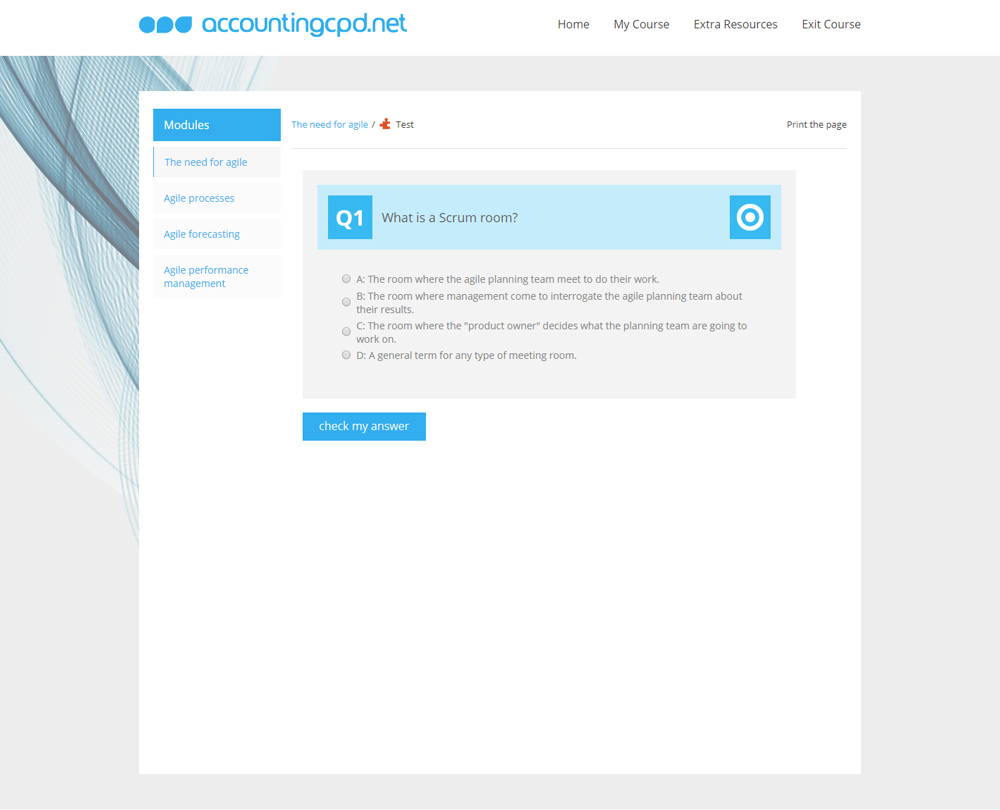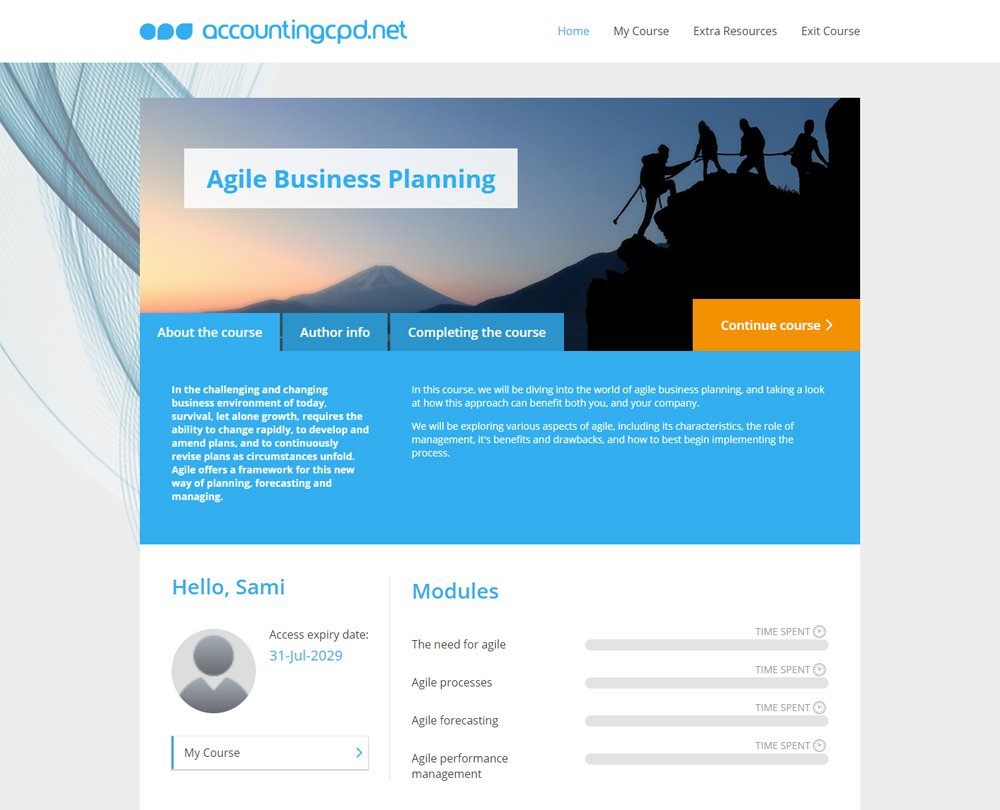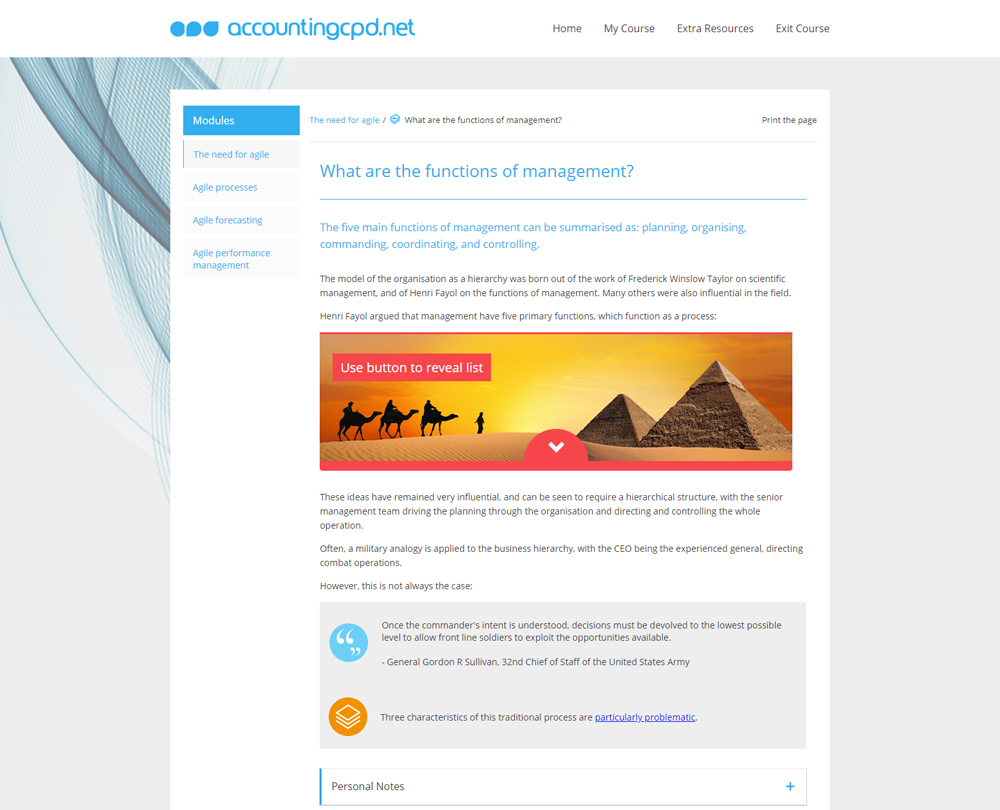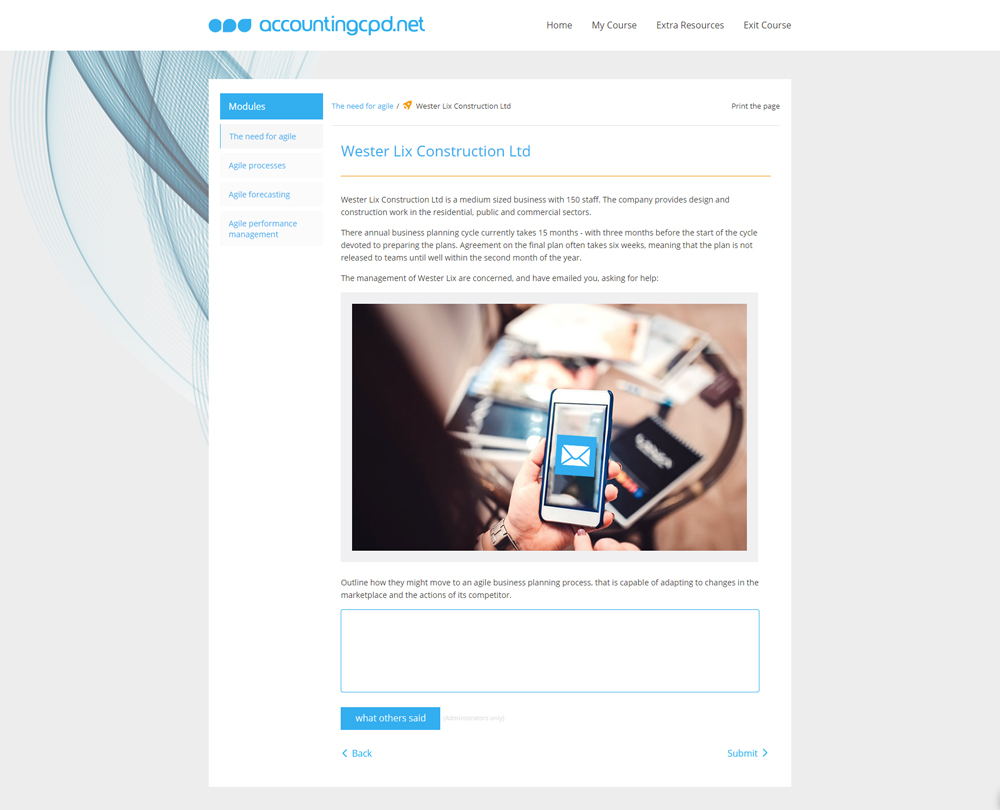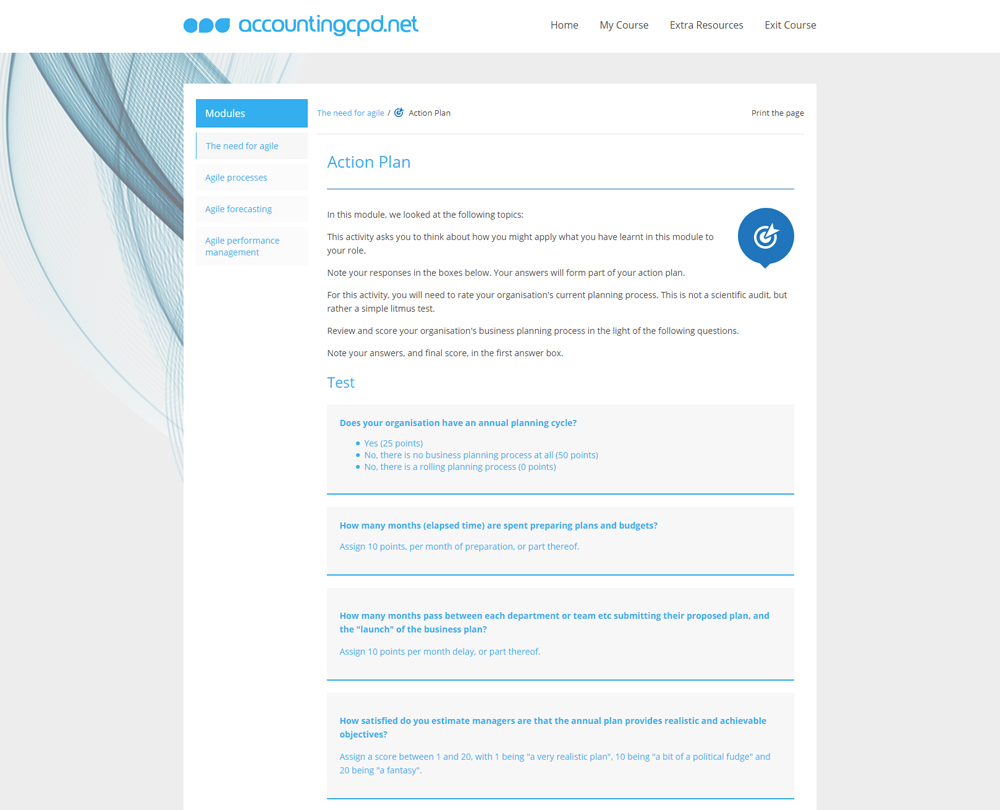Agile Business Planning
World class finance functions have business plans that are always relevant. This course shows you how a more agile approach to forecasting and budgeting can ensure that your plans remain the drivers of strategy.
This course will enable you to
- Understand the principles of agile business planning and its benefits
- Use SCRUM to put an agile planning process into practice
- Connect your planning to the changing needs of the business, marketplace and environment
- Refresh and re-profile agile forecasts if circumstances change
- Take a closer look at the role of management, how best to manage performance, and how different management styles can benefit - or hinder - the process
About the course
As an accountant, you know that business today is challenging and rapidly evolving. Survival, let alone growth, requires the ability to adapt swiftly, to develop and amend plans, and to continuously revise plans as circumstances unfold. Agile offers a framework for this new way of planning, forecasting and managing.
In this course, you will dive into the world of agile business planning and look at how this approach will benefit you and your company.
You will explore various aspects of agile, including its characteristics, the role of management, its benefits and drawbacks, and how to begin implementing the process.
Look inside
Contents
- The need for agile
- What are the problems with a traditional planning process?
- What are the functions of management?
- What is business agility?
- What are the agile principles?
- What do agile managers look like?
- What are the benefits of agile business planning?
- Agile processes
- Which methodology should you follow?
- Which roles are involved with Scrum?
- What are the artefacts in Scrum?
- What does the Scrum process look like?
- What does agile business planning look like in practice?
- What are the criticisms of agile business planning?
- What does an agile business planning cycle look like?
- Agile forecasting
- What are the characteristics of agile forecasting?
- What is relative forecasting?
- What is a minimum viable product?
- How should you prioritise?
- Agile performance management
- What are the dangers of management by control?
- What should performance management look like?
- How can you manage performance?
- Why is reporting important?
- How should agile business planning be implemented?
- What does "good" look like?
- How do you deal with resistance to change?
- How can you aid the transition?
How it works
Reviews
You might also like
Take a look at some of our bestselling courses

